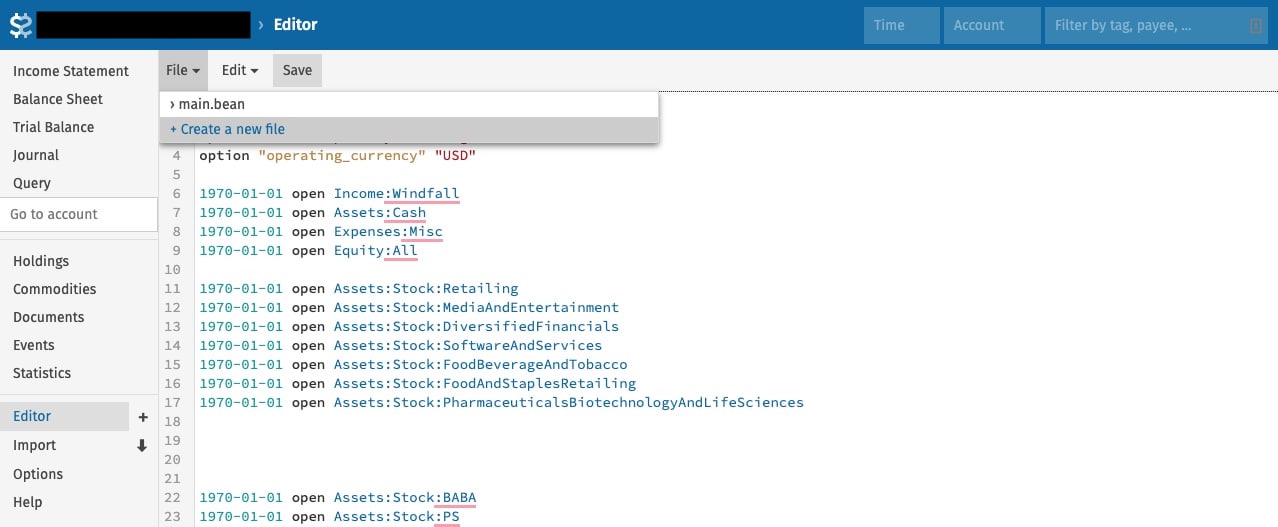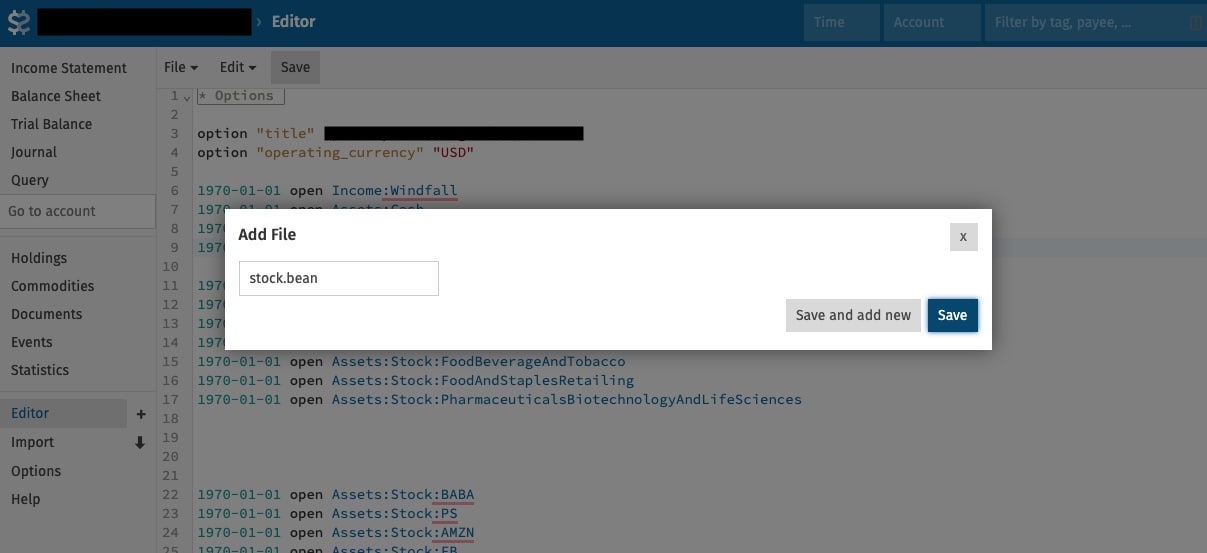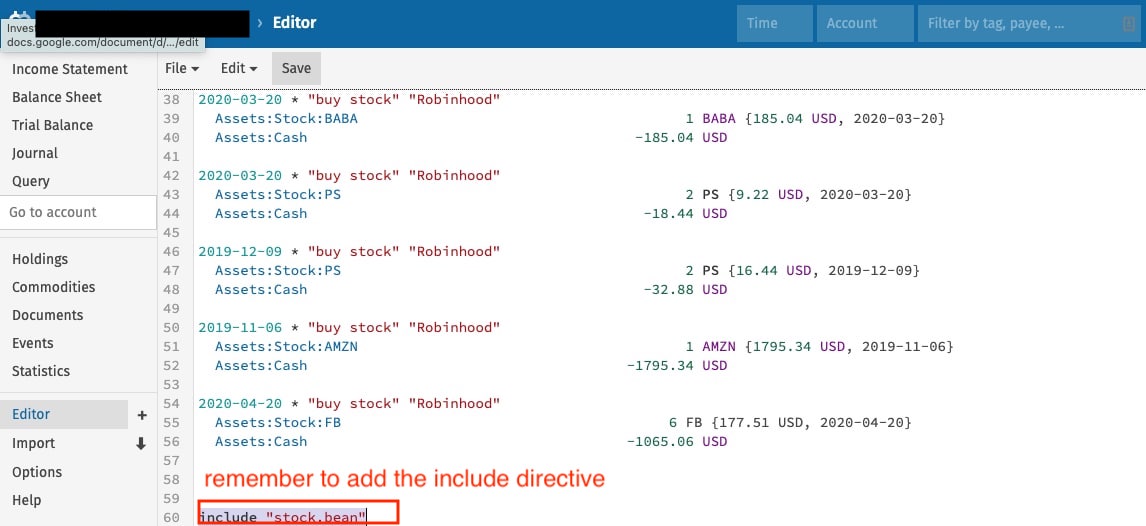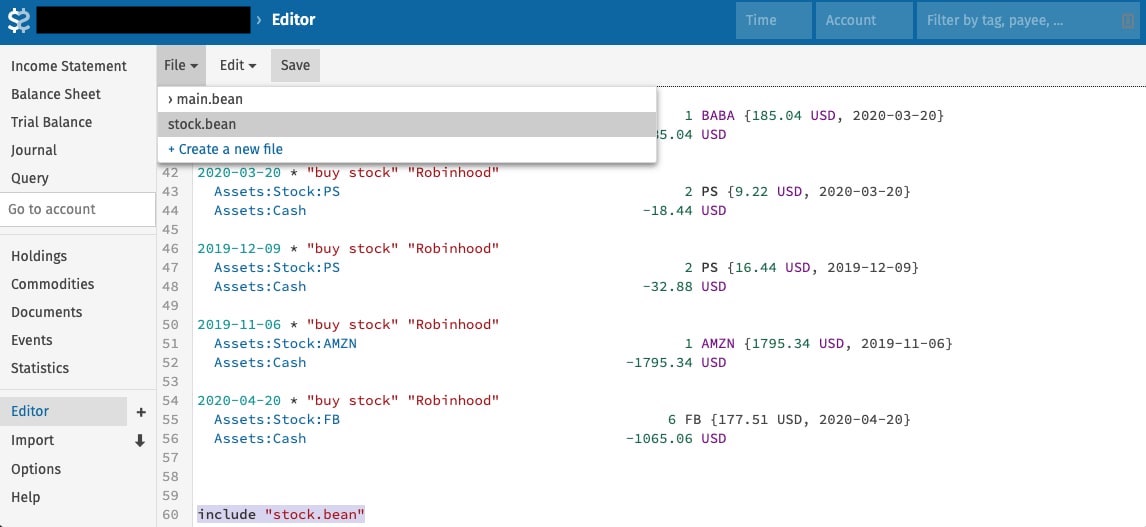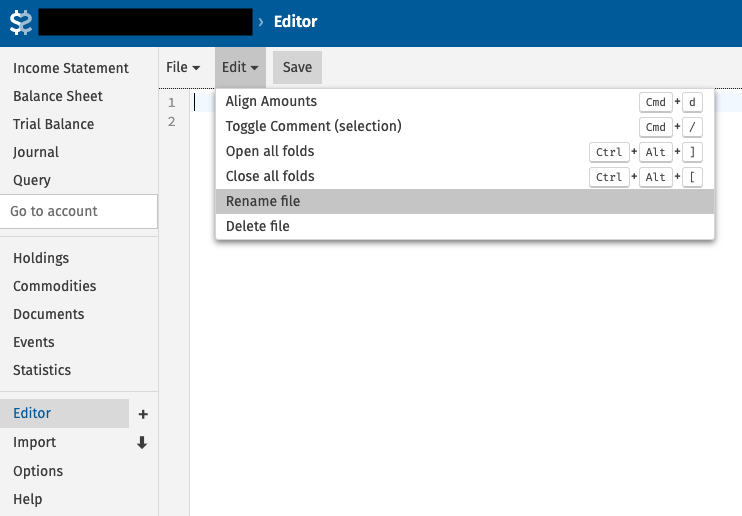Discover the Magic of Plain Text Accounting with Beancount
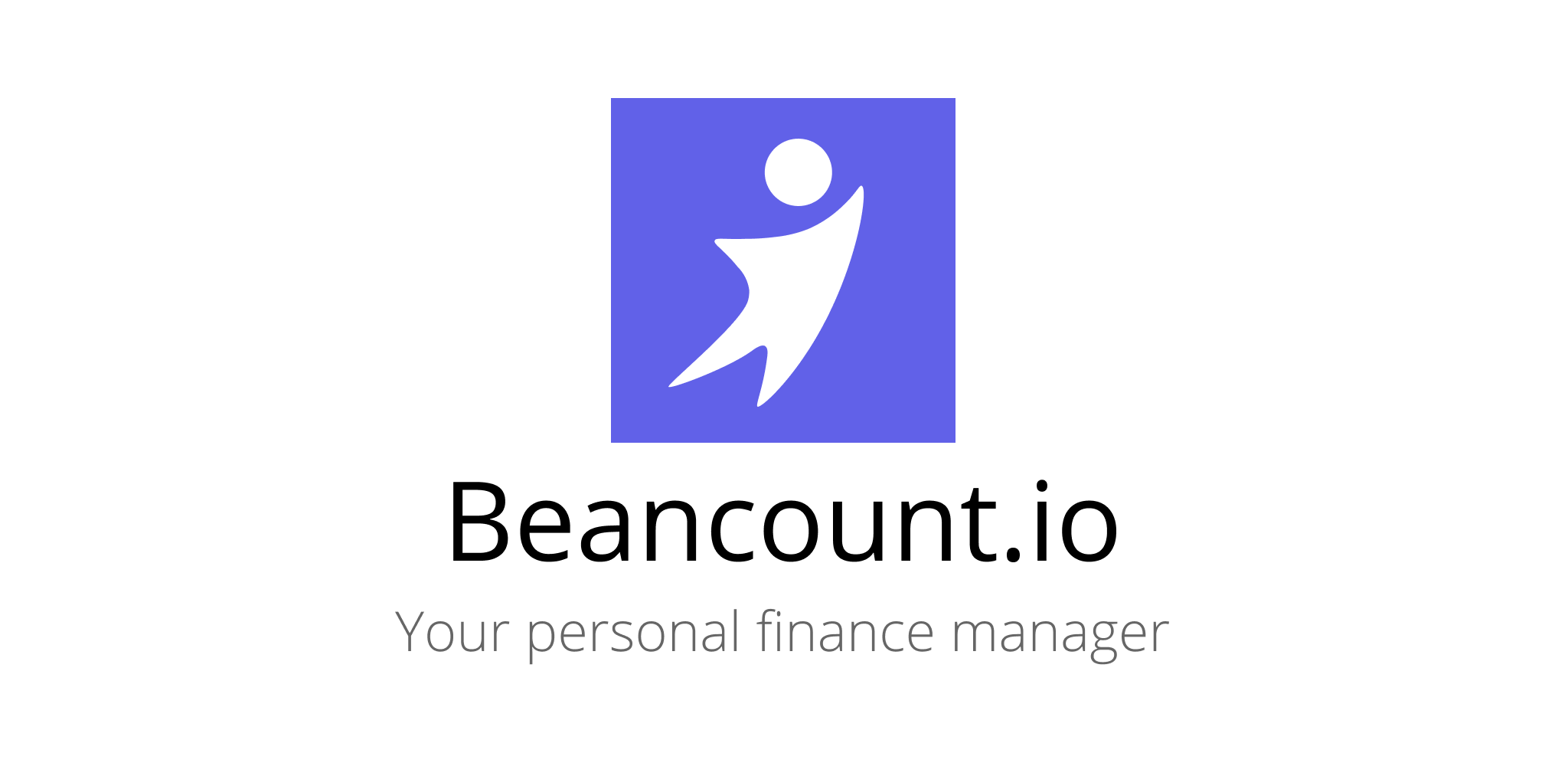
Introduction

Welcome to a world where accounting is no longer a daunting task. Today, we introduce you to Beancount, a powerful, flexible, and intuitive plain text accounting tool. Beancount empowers you to take control of your finances by providing a transparent and straightforward approach to managing your money.
In this comprehensive guide, we will delve into the basics of Beancount, explain its core concepts, and walk you through its simple yet powerful features. By the end of this blog, you'll have a solid understanding of Beancount and be ready to start using it to organize and analyze your financial life.
What is Beancount?
Beancount is an open-source, plain text accounting system created by Martin Blais. Inspired by John Wiegley's Ledger system, Beancount aims to provide a robust and reliable method to manage personal and small business finances using plain text files. With Beancount, you can track your income, expenses, investments, and much more with ease.
Why Beancount?
Plain text accounting offers several advantages over traditional spreadsheet-based or software-based accounting systems:
- Transparency: Beancount files are human-readable, making it easy to understand and audit your financial data.
- Flexibility: Beancount can be easily customized to fit your specific needs, and you can use your favorite text editor and version control system to manage your financial data.
- Portability: Your financial data can be accessed on any device, and it's easy to transfer between systems or share with others.
- Future-proof: Plain text files are universally compatible, ensuring that your financial data will remain accessible, even as technology evolves.
Beancount's Core Concepts
To use Beancount effectively, it's crucial to understand its core concepts:
- Transactions: Financial events, such as income, expenses, or transfers between accounts, are recorded as transactions.
- Accounts: Transactions involve one or more accounts, such as assets, liabilities, income, or expenses.
- Double-entry bookkeeping: Beancount enforces double-entry bookkeeping, ensuring that every transaction has balanced debits and credits.
- Directives: Beancount uses a set of directives to define transactions, account openings, and other financial events.
Getting Started with Beancount
To start using Beancount, follow these simple steps:
- Install Beancount: Install Beancount on your system using the provided installation instructions for your operating system.
- Create your Beancount file: Create a new plain text file with the .beancount extension (e.g., my_finances.beancount).
- Define your accounts: Use the "open" directive to define the accounts you'll use in your transactions.
- Record transactions: Use the "txn" directive to record your financial transactions.
Or simply sign up at https://beancount.io. Here are some plain text accounting examples -
Example 1: Basic Transaction
2023-04-01 open Assets:Checking
2023-04-01 open Expenses:Groceries
2023-04-10 txn "Grocery Store" "Buying groceries"
Assets:Checking -50.00 USD
Expenses:Groceries 50.00 USD
In this example, we open two accounts, Assets:Checking and Expenses:Groceries. On April 10, 2023, we record a transaction for buying groceries worth $50. The transaction reduces the balance of Assets:Checking by $50 (debit) and increases the balance of Expenses:Groceries by $50 (credit).
Example 2: Income and Expense Transaction
2023-04-01 open Assets:Checking
2023-04-01 open Income:Salary
2023-04-01 open Expenses:Rent
2023-04-05 txn "Employer" "Salary payment"
Assets:Checking 2000.00 USD
Income:Salary -2000.00 USD
2023-04-06 txn "Landlord" "Monthly rent payment"
Assets:Checking -1000.00 USD
Expenses:Rent 1000.00 USD
In this example, we open three accounts: Assets:Checking, Income:Salary, and Expenses:Rent. On April 5, 2023, we record a salary payment transaction of $2000. The transaction increases the balance of Assets:Checking by $2000 (credit) and decreases the balance of Income:Salary by $2000 (debit). On April 6, 2023, we record a rent payment transaction of $1000. The transaction reduces the balance of Assets:Checking by $1000 (debit) and increases the balance of Expenses:Rent by $1000 (credit).
Example 3: Transfer Between Accounts
2023-04-01 open Assets:Checking
2023-04-01 open Assets:Savings
2023-04-15 txn "Bank" "Transfer from Checking to Savings"
Assets:Checking -500.00 USD
Assets:Savings 500.00 USD
In this example, we open two accounts: Assets:Checking and Assets:Savings. On April 15, 2023, we record a transaction to transfer $500 from the checking account to the savings account. The transaction reduces the balance of Assets:Checking by $500 (debit) and increases the balance of Assets:Savings by $500 (credit).
These examples illustrate the basic concepts of Beancount's double-entry bookkeeping system. By properly recording transactions, users can maintain accurate records of their financial activities and generate reports to gain insights into their financial situation.
Generating Reports and Analyzing Data
Beancount comes with a set of powerful tools for generating financial reports, including balance sheets, income statements, and more. You can also use Fava, a web-based user interface for Beancount, to visualize and interact with your financial data. https://beancount.io is built upon Fava with MIT license.
Conclusion
Embrace the power and simplicity of plain text accounting with Beancount. By understanding its core concepts and following the steps outlined in this guide, you'll be well on your way to managing your personal or small business finances with ease and precision. As you grow more comfortable with Beancount, you can explore advanced features and customizations to tailor the system to your unique needs.
Whether you're looking to track your spending, plan for the future, or gain insights into your financial habits, Beancount offers the flexibility and transparency needed to achieve your goals. With its user-friendly approach, Beancount has the potential to revolutionize the way you manage your finances and empower you to take control of your financial future.
Now that you have a solid foundation in Beancount, it's time to embark on your plain text accounting journey. Say goodbye to cumbersome spreadsheets and convoluted software, and welcome the world of Beancount. Happy accounting!



